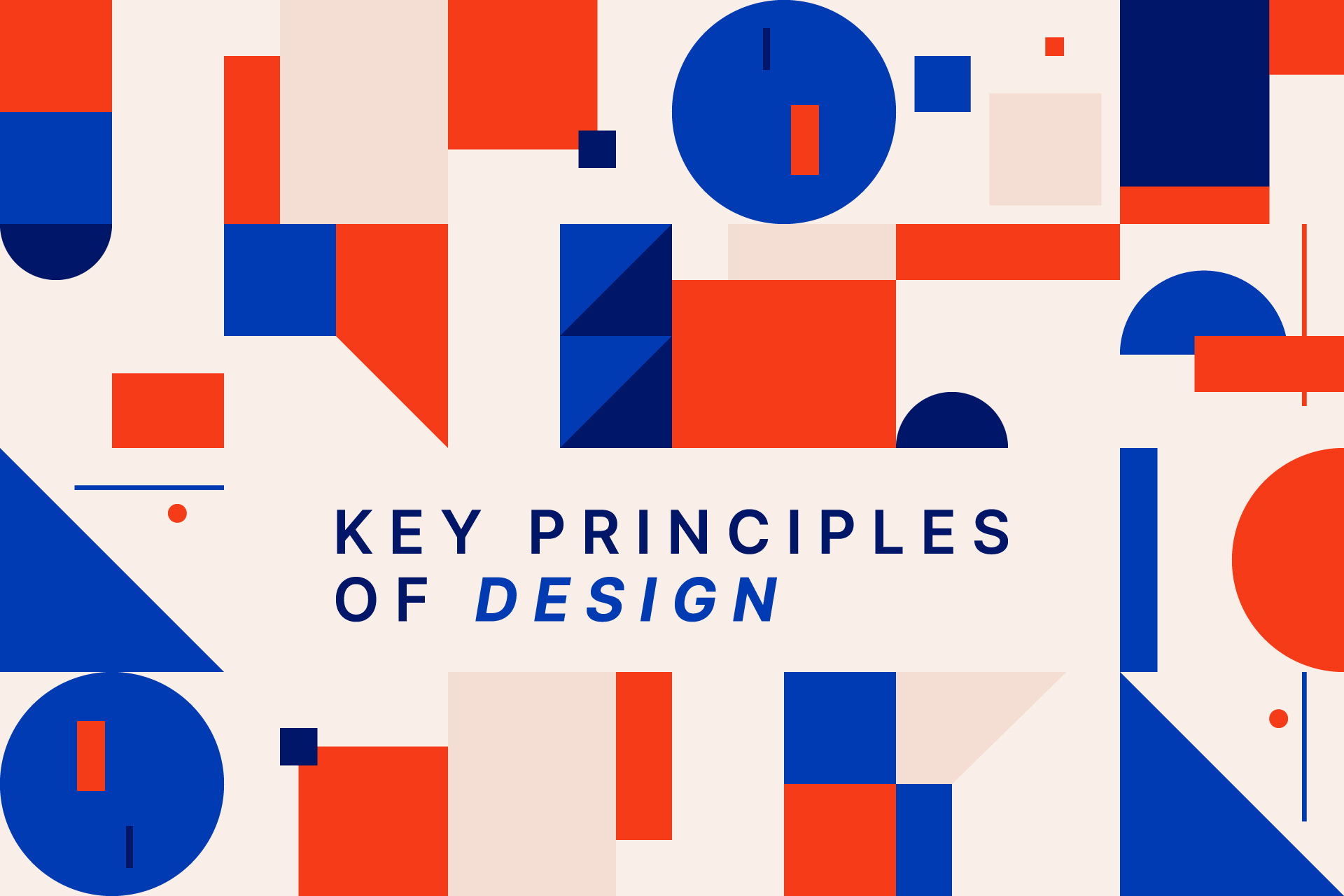11 Key Principles of Design: Master Visual Appeal

Navigating the dynamic world of design can be akin to embarking on an artistic adventure. Amidst evolving trends and individual tastes, there lies a stable foundation—the Principles of Design.
These guiding lights are your allies whether you’re sculpting a stunning website, crafting a mesmerizing poster, or strategizing the best social media ad graphics. Grasping these principles is your key to unlocking a realm of design that resonates and leaves a lasting imprint.
Table of Contents
1. Balance
Every good design starts with a sense of equilibrium, ensuring that no part of the design overpowers the other. Balance can be achieved in three primary ways:
- Symmetrical Balance: Think of a butterfly, its wings mirror each other—this is symmetrical balance. In design, it creates a sense of calm and order.
- Asymmetrical Balance: Here, different elements are used, but they still balance each other out because of their combined visual weight. For example, a large picture on one side can be balanced with a small cluster of text on the other.
- Radial Balance: Everything radiates from a central point, like the petals of a flower. This kind of balance gives a dynamic and full-bodied feel to the design.
2. Contrast
Contrast adds vibrancy to designs by creating differences. It can be achieved through variations in color, shape, and space. Remember, contrast doesn’t just capture attention but can also guide your audience’s eyes, especially in social media graphics design, where you only have a few seconds to captivate.
3. Emphasis
Emphasis revolves around making specific elements in your design stand out. Whether it’s a headline, a logo, or an image, designing with emphasis means making choices that guide your audience towards the most crucial part of your message.
4. Movement
Movement isn’t about things physically moving in your design. It’s about guiding the viewer’s eye in a specific direction. For instance, a good business card design strategically uses movement to guide the viewer’s eye from the name to contact details seamlessly.
5. Rhythm and Repetition
Much like music, design too has a rhythm. It’s the pattern formed through repetitive elements. A consistent rhythm in designs like websites or brochures ensures users have a smooth, predictable experience. An irregular rhythm, on the other hand, can add interest and dynamism.
6. Proportion and Scale
Proportion is all about the relationship between different elements in your design. Playing with scale (how large or small elements appear) can create depth, highlight importance, or add interest to your designs.
7. Hierarchy
Hierarchy streamlines information. With the correct use of size, position, and color, you can guide the viewer to read and interpret the design in a particular order, making it especially vital in data-heavy designs like infographics.
8. Unity and Harmony
Unity is about ensuring all elements in your design feel like they belong together. It can be achieved by using consistent colors, shapes, or textures throughout your design. Think of it as the glue that binds all other principles together.
9. White Space (Negative Space)
White space isn’t necessarily ‘white.’ It’s the breathing room around different elements in your design. Effective use of white space ensures your design doesn’t feel cluttered, and the main elements stand out. Especially in web design, where too much information can quickly become overwhelming, white space can be a savior.
10. Alignment
Alignment brings the order to design. Whether you’re creating a text-heavy report or a visual poster, ensuring elements align correctly can be the difference between a design looking cluttered or clean.
11. Functionality and Accessibility
Good design isn’t just about looking pretty—it has to function well. This means ensuring that all users, including those with disabilities, can access and understand your design. Especially in the digital realm, ensuring your designs are accessible is both a best practice and, in many cases, a legal requirement.
Applying The Principles of Design
The principles of design aren’t just rules to follow—they’re guidelines to ensure your designs are as effective and compelling as possible. Whether you’re an amateur getting started or a seasoned professional, revisiting these principles can offer invaluable insights.
If you ever find yourself stuck, consider hiring an on-demand design team or consulting a graphic design agency that’s up-to-date with the latest design trends. Remember, the principles remain the same; it’s how you interpret and apply them that makes all the difference.
For those keen on diving deeper into design principles, consider exploring resources like design books, online courses, or professional services like TripleGrowth, which offers affordable, high-quality designs and a range of other graphic design services tailored to your needs.
What are the Principles of Design?
The Principles of Design are fundamental guidelines used in visual arts and design to create well-balanced, harmonious compositions.
Why are the Principles of Design important?
They help designers and artists organize elements effectively to communicate intended messages, ensuring the visual appeal and functionality of designs.
What are the key Principles of Design?
The key principles include Balance, Contrast, Emphasis, Movement, Pattern, Rhythm, and Unity, each playing a vital role in effective design creation.
How can I apply the Principles of Design?
Applying these principles involves thoughtful arrangement of design elements to enhance visual appeal, convey messages clearly, and engage the audience.
Where can I learn the Principles of Design?
Learning resources include design schools, online courses, books, and professional services like TripleGrowth that offer customised design solutions.
Can mastering the Principles of Design improve my work?
Absolutely! Mastering these principles can significantly improve the visual appeal, effectiveness, and professional quality of your design work.
Do professional design agencies follow the Principles of Design?
Yes, reputable design agencies like TripleGrowth adhere to these principles to deliver high-quality, effective, and visually appealing designs to clients.
How do the Principles of Design impact branding?
They ensure consistency, recognizability, and emotional resonance in branding, which are crucial for building a strong, positive brand identity.